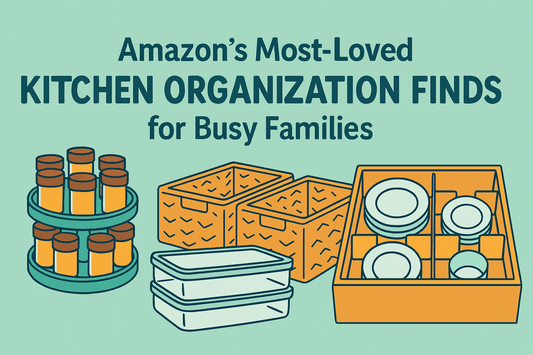Let’s be honest. Screens are everywhere. They’re in our pockets, our kitchens, our cars — and yes, sometimes they’re in the hands of our toddlers while we try to drink one hot cup of coffee in peace.
But while screens can be a lifesaver in the short term, study after study shows that too much screen time, especially at a young age, can affect everything from sleep to attention spans to emotional regulation.
The American Academy of Pediatrics recommends no more than one hour of high-quality screen time per day for kids aged 2 to 5 — and even that should come with adult supervision.
So what’s a parent to do in a world that runs on tech? The answer isn’t to be perfect. It’s to be intentional. Let’s look at where you are in the screen time journey — and how to build better boundaries no matter your starting point.
🔍 Where Are You in the Screen Time Struggle?
1. “We Haven’t Started Screen Time Yet”
First of all — wow. Can we send you a trophy? If you’re here before screens have become part of your daily rhythm, you’ve got a golden opportunity to start strong. You don’t have to swear off all screens forever, but you can set expectations early:
- Limit usage to specific times of day (like during dinner prep).
- Choose content wisely (think: Bluey over YouTube gift opening videos).
- Watch together when possible — it turns screen time into bonding time.
Why this matters: Starting with boundaries makes it easier to keep them as your child gets older. You’ll thank yourself later.
2. “We Do Some Screen Time… But There’s No Real Plan”
This is probably where most of us land. Maybe they watch after dinner, or you hand over the tablet while folding laundry. It’s not chaos, but it’s not exactly consistent either.
Start by observing the current pattern:
- When do you usually allow screen time?
- How does your child behave during or after watching?
- Are you using it as a tool or as a default?
Then put a simple system in place:
- Use a visual timer so they know how long they have.
- Stick to set times of day (like one show after nap).
- Try “earn to watch” methods (see below).
Why this matters: Predictability reduces fights. If your kid knows when screen time is and how long it lasts, the meltdown factor drops dramatically.
3. “Help. My Kid is Addicted to the iPad and I’m Just a Guest Here.”
First of all, deep breaths. You are not alone. Many parents unintentionally slide into this spot — especially during those long days when you’re just trying to survive.
The key here is a gentle but firm reset:
- Let your child know that things are changing — and why.
- Start with small wins. Cut back 15 minutes a day or limit screens to certain rooms.
- Introduce a daily cap and earn-to-watch system (below).
Why this matters: Screens are addictive — and not just for kids. Taking back control now sets a precedent for healthier habits in the long run.
🎯 Systems That Make Screen Time Boundaries Easier
1. Earn It to Watch It
Use a simple ticket or chore system (check out our last article on reward systems!) where kids earn screen time in small increments (e.g., 10 minutes) for things like:
- Making their bed
- Cleaning up toys
- Helping set the table
This makes screen time a reward — not a default.
2. Visual Timers & Countdown Clocks
Toddlers and young kids thrive on visual cues. Tools like the Time Timer are game-changers. Kids can “see” how much time they have left without constantly asking.
3. Screen-Free Zones
Designate specific areas of your home as screen-free: bedrooms, dining table, or car rides under 20 minutes. When there’s consistency, there’s less negotiation.
4. Weekend Passes or Tokens
Create weekend screen time tokens (e.g., 4 tokens worth 30 minutes each). Let your child choose when to use them — but once they’re gone, they’re gone. This teaches limits and decision-making.
💬 Final Thoughts: It’s Not About Perfection
We’re not raising robots. We’re raising little humans — and screen time is part of the world they’re growing up in. Setting boundaries doesn’t mean eliminating fun. It means protecting our kids from developing unhealthy habits too early, while still letting them enjoy the things they love.
If you’re feeling overwhelmed, just start with one small change. Maybe that’s setting a daily limit. Or maybe it’s declaring dinner screen-free. Wherever you are — you’ve got this.
Progress over perfection. Every little change helps your child build a healthier relationship with technology… and yes, fewer tantrums too.
Share in the comments the system that works for you & your family!
Want more real-life parenting tips like this? Subscribe to our newsletter and never miss a post!










